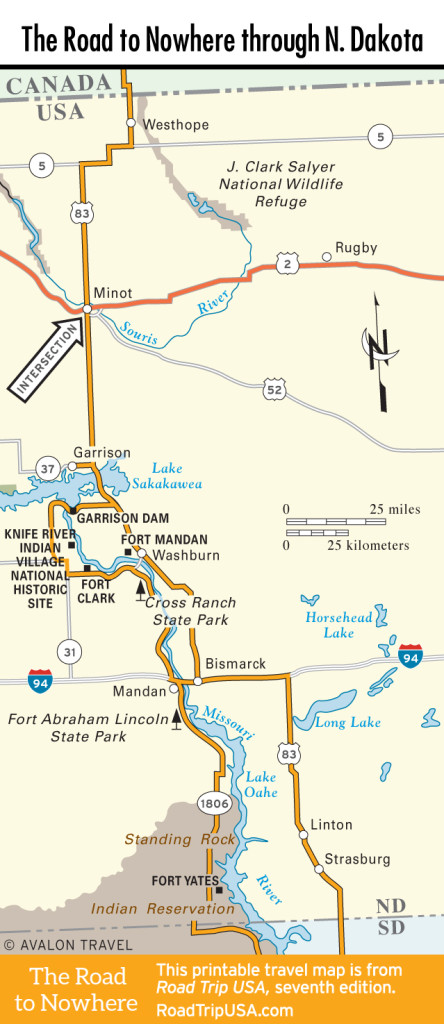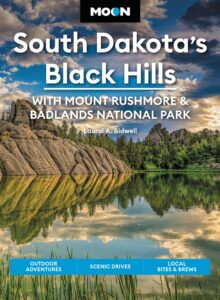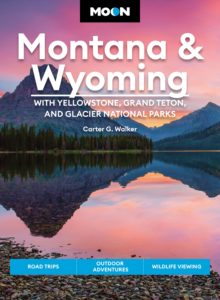North Dakota
Beginning at the U.S. border with Manitoba, Canada, US-83’s route across North Dakota is a 265-mi-long (425-km) rehash of childhood back-of-station-wagon dreamscapes: epic plains too green or golden-hued for your eyes to process rationally, and endless cultivated fields punctuated by umpteen farmers’ cooperatives, storage bins, silos, and grain elevators. Hay bales of all shapes and sizes dry perilously close to the roadside, and Stetsoned figures in dusty pickups or mighty tractors amiably lift their index fingers off steering wheels in back-forty greetings.
US-83 doesn’t really follow a straight plumb line south—it just seems that way. After meandering from the border across the fertile residuals of ancient Lake Souris near lonely Westhope, the route seems to fall straight down the map while crossing the drift prairie south to Minot. Continuing south across the viaduct separating giant Lake Sakakawea and the much smaller Lake Audubon, US-83 winds across slightly more ambitious hills and plateaus along a historic and hardly changed stretch of the mighty Missouri River to Bismarck, the state capital and a better-than-expected place to spend some time.
South of Bismarck, US-83 cuts away from the riverfront through a pastry-rich pastoral landscape settled around the turn of the 20th century by German immigrants—including the parents of dance-meister Lawrence Welk—while a recommended detour follows the Missouri River across the huge, historic Standing Rock Indian Reservation that stretches into South Dakota.
Travel Map of the Road to Nowhere through North Dakota
















